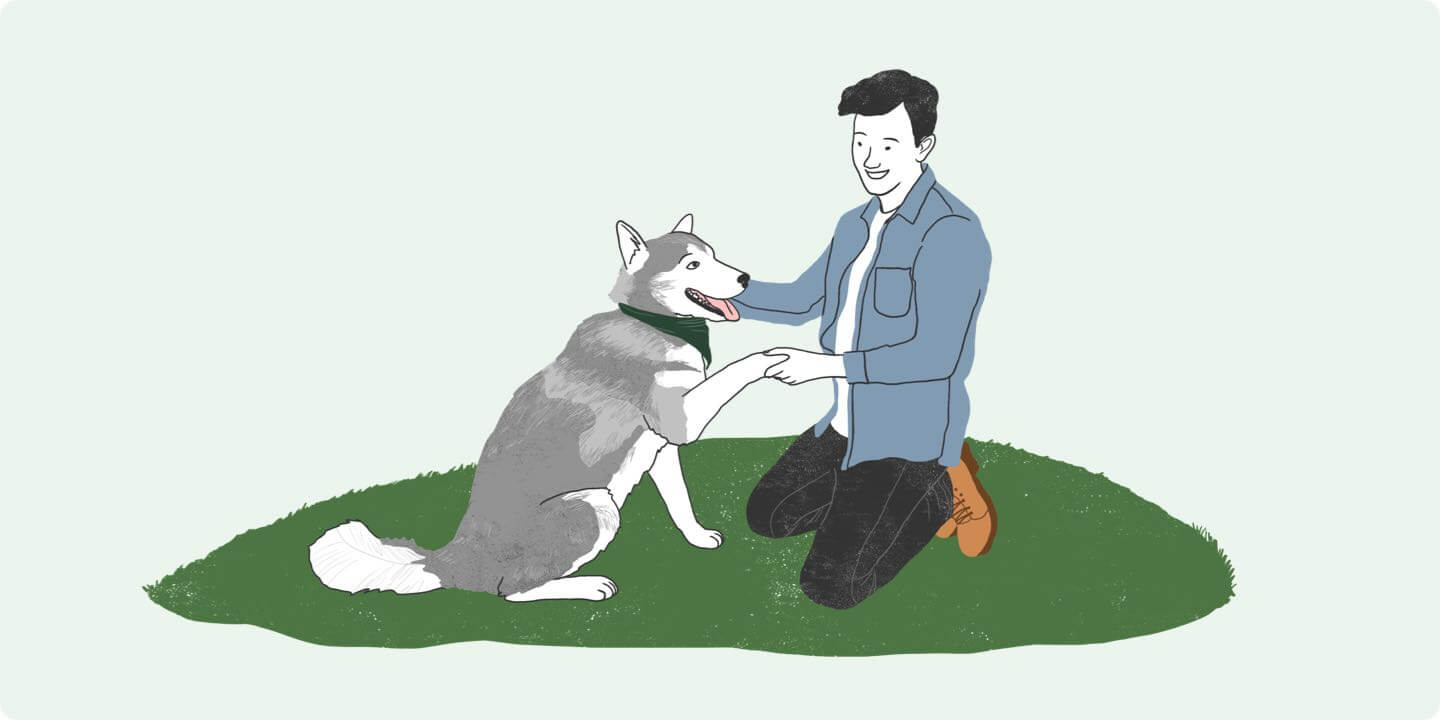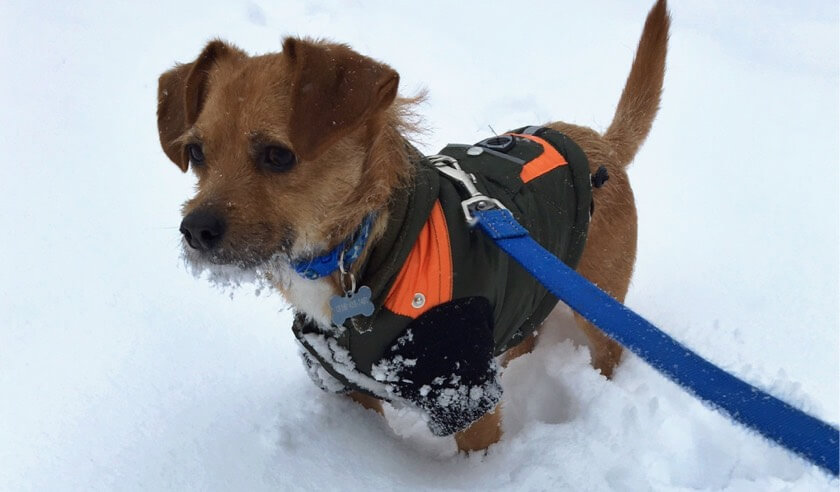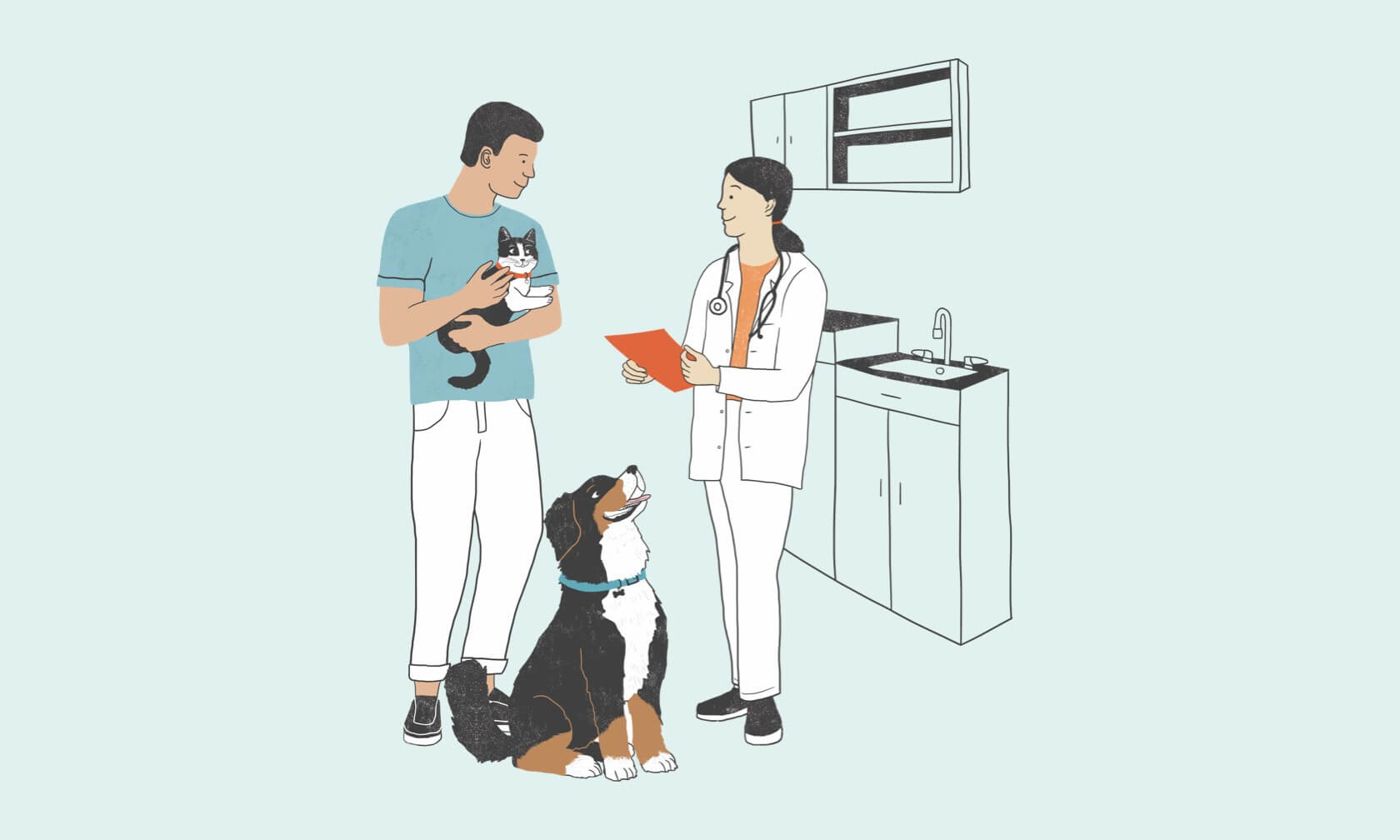Think of your dog’s paw pads as their foundation — paw pads help your dog keep their balance, protect them from injuring sensitive skin on their feet and between their toes, and insulate against hot and cold temperatures. It’s important to regularly check your dog’s paw pads and care for them so they can continue exploring pain-free.
Your dog’s paw pads are just like your feet. If you walk outside barefoot frequently, you’ll build up calluses and thicker skin that can stand up to rougher terrain. Compare this to if you always wear socks and shoes outdoors and have more tender feet — you’ll be more sensitive to things like rough asphalt or gravel if you must walk barefoot outside. Your dog’s paw pads are the same. If your dog spends most of their time indoors or on grass, they’ll be softer and more likely to tear or rip.

Hiking, Playing or Walking on Rough Surfaces
If you’d like to take your dog hiking, go on longer walks, or play games of fetch in a rough-terrain dog park (like gravel), get your dog’s paw pads used to it over time by starting with short-duration exposure to those surfaces. This way, you’ll be slowly building up their calluses. Even if they do have some toughness built up on their paw pads, that doesn’t mean they’re totally safe from injury though.
Protect Your Dog's Paw Pads from Injury
The best way to protect your dog’s paw pads from injury is to have them wear dog booties when walking, hiking, and playing on rough terrain or in extreme temperatures. If your dog has a tough time wearing booties, you can invest in a paw pad wax or balm that helps condition and protect your dog’s paw pads.
Treating Sore Dog Paw Pads
Take a minute or two every day to do a paw check on your dog. Look for any rips or tears on their pads. Check between their toes and paw webbing for anything that might have gotten stuck in there, such as dangerous foxtails or small rocks. If you’re concerned about an injury to your dog’s paw pad, a visit to your veterinarian is in order. Certain paw pad injuries can be painful and could become infected. If the injury seems superficial and minor, you can apply a paw wax or balm, cover with a baby sock, and use medical tape over the sock to secure it (make sure to avoid taping their fur!)
Trimming Around Your Dog's Paw Pads
Keeping the hair that grows between your dog’s paws cleaned and trimmed helps keep their paws healthy and gives more traction on slippery surfaces in your home. Trimming dog paw pads also makes it easier to spot when there is a problem. Never use scissors to trim the hair between your dog’s paws — always use clippers. If you’re unsure or aren’t comfortable trimming the hair on your dog’s paws, their groomer will be able to do so at their next grooming appointment.
Summer & Winter Paw Pad Hazards
Summer
Avoid walking your dog on hot pavement. How can you tell if the pavement is too hot? Place the back of your hand on the pavement for 7 seconds. If you can’t keep your hand there that entire time, it’s too hot for your dog to walk on.
Take your dog out for their walk early in the morning or late in the evening to keep their paw pads safe from pavement burns (and avoid heat stroke). If you’ve got to take them out during the hotter parts of the day, protect their paws by walking them on grass and other surfaces that are likely to be cooler than the streets and sidewalks, and keep these mid-day trips short.
Winter
Avoid letting your dog walk on surfaces that have been treated with de-icer or salt, as these can burn their paw pads (or be ingested if they lick their paws afterward).
Don’t let snow or ice build up between their paw pads while outside. If your dog does get “pawsicles,” the best way to remove them is to wrap the paw in a warm towel (not too hot) for a few minutes. This will safely melt the stuck snow and ice from their paw fur and pads. Avoid pulling the pawsicles out, as that really hurts.
With some easy preventive measures like daily paw checks, conditioning your dog’s pads to rougher terrain, and using booties or paw pad wax or balm, your dog will be able to enjoy their hikes and walks all year round.
ZPC-00317R2





